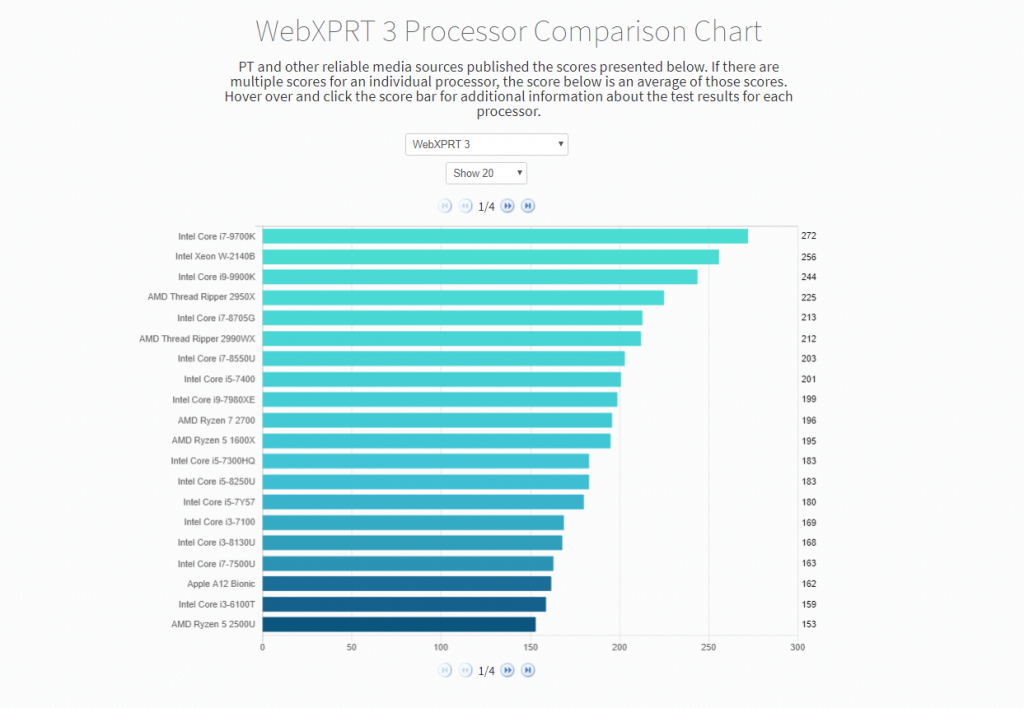Just this past summer, WebXPRT passed the 250,000-run milestone, and since then, the run total has already passed 330,000. September was our biggest month ever, with over 28,000 WebXPRT runs! We sometimes like to show the community how far a reach the XPRTs have around the world by reporting the latest stats on the number of articles and reviews that mention the XPRTs, and the fact is that most of those mentions involve WebXPRT. Today, I thought it would be interesting to bring the numbers to life and provide a glimpse of how the tech press uses WebXPRT. Here’s a sample of WebXPRT in action during the past couple of weeks.
- PCWorld published WebXPRT 2015 and WebXPRT 3 scores in a review of the Snapdragon 50-based Samsung Galaxy Book 2.
- AnandTech published WebXPRT 3 and WebXPRT 2015 score in their detailed analysis of the Intel Core i9-9900K, Core i7-9700K, and Core i5-9600K.
- The Tech Report published a WebXPRT 3 score in its AMD Ryzen Threadripper 2920X review.
- AnandTech published WebXPRT 3 scores for the AMD Threadripper 2 2920X and 2970WX in an extensive review, and explained why they’ll be using WebXPRT in their 2019 benchmark suite.
- Tom’s Hardware published a WebXPRT 2015 score in an AMD Ryzen Threadripper 2970WX review.
- Notebookcheck used WebXPRT 3 in an LG Q Stylus review and WebXPRT 2015 in a Dell Chromebook 11 3181 review.
- 3DNews (Russia) used WebXPRT 2015 in its Apple iPhone XS Max review.
While WebXPRT continues to be a useful tool for tech enthusiasts around the world, you don’t have to be a tech expert to benefit from it. If you’d like to know more about WebXPRT, check out our recent video, What is WebXPRT and why should I care?
Justin














